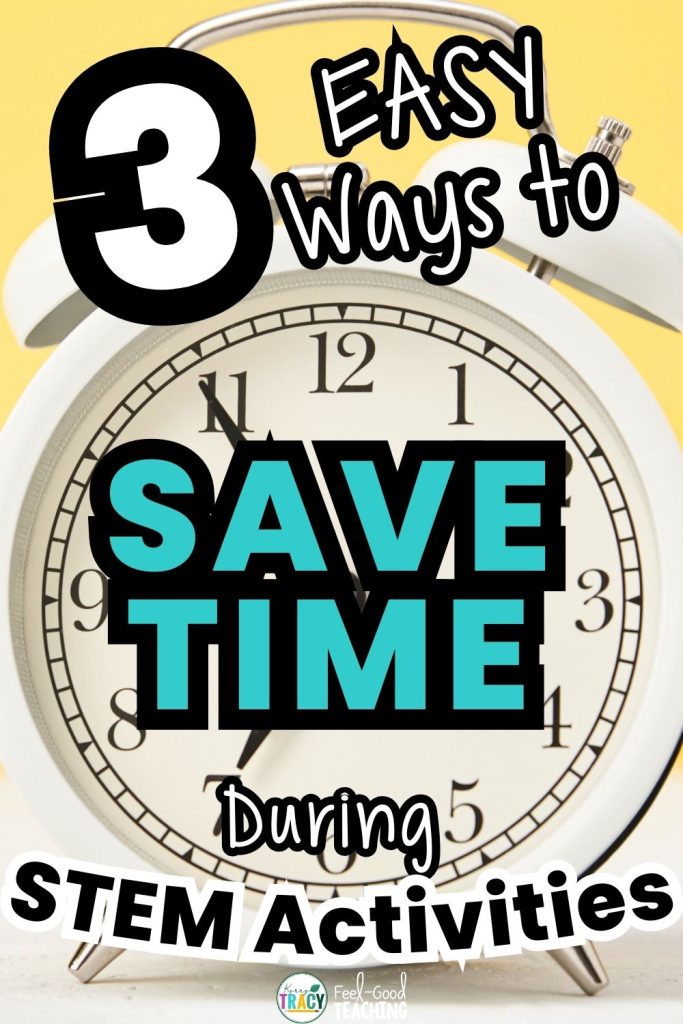Last time, I shared ways to save time when you’re planning your STEM lessons. Today, I want to share ways you can help you and students save time during STEM activities.

Table of Contents
Save Time, Tip 1: Consider Some Builds Proof-of-Concept or Simply Exploration
When I set a time constraint for a STEM Challenge, I already know many (most?) of the groups won’t finish in time. Why not? Because they’d take the whole day if I let them. Things don’t go to plan. Inspiration for a better idea strikes in the last minute. I don’t always have an expectation they’ll finish, and I don’t necessarily need them to finish to achieve my objectives for that day.
For me process over product, always! Think about our approach to teaching writing — do students ALWAYS write a 5-paragraph essay or fully publish a story? No! Sometimes we focus on quick writes or refining one paragraph — or even just one sentence — beautifully. Sometimes it’s OK to just do a quick build or to focus on just one part of the EDP, like planning. You don’t have to do all the things all the time!
Save Time, Tip 2: Manage Student Expectations
Even if I don’t expect students to finish, convincing them that’s OK can take some time. I much prefer to stop them a bit early so we have time to share out and discuss. This process helps students trust it’s OK not to finish. During their time to share, they explain what they did & what they’d do if they had more time, how it’s supposed to work (even if it isn’t functional yet), etc. If you aren’t doing a whole-class second iteration of the challenge, consider leaving a challenge as a choice board option, center rotation, etc. so students will get a chance to follow up on their “more time” ideas.
For me, the priority is how the students are thinking through the process. The thing they’re actually building is just the vehicle to get us to critical thinking and problem-solving. Another thing to consider here is that it can be very helpful to students to stop to process their work and the work of their peers before completing their design.
Save Time, Tip 3: SLOW DOWN
Slowing down is my favorite tip because we so frequently get the opposite message! I know I feel agitation in my soul when things are always moving too fast and I have too much to do. Consider sprinkling in activities that you think should take a few minutes and expand the time to complete them so students’ minds breathe a bit. In short: do less, better!
When you expand the time on a simple activity, it can calm the nerves and allow you to get in the weeds and deepen the experience with more discussion and Q/A. When we’re always moving a break-neck speed, students learn coping mechanisms (like avoidance, stalling, acting up) in order to self-soothe. Examples of short activities you can extend and do a deep dive with can be found in this bellringer bundle or 30-min STEM activities bundle.
Final Thought
Remember, it’s not about how much ground you “cover” in your classroom; it’s about what the students retain! It can be so easy to get caught up in trying to do everything, but it’s more effective to do less, better. And you know what? It also feels so much better for both teachers and students when you don’t rush through #allthethings.
Check out more time-saving tips on this blog post.
Pin me!



